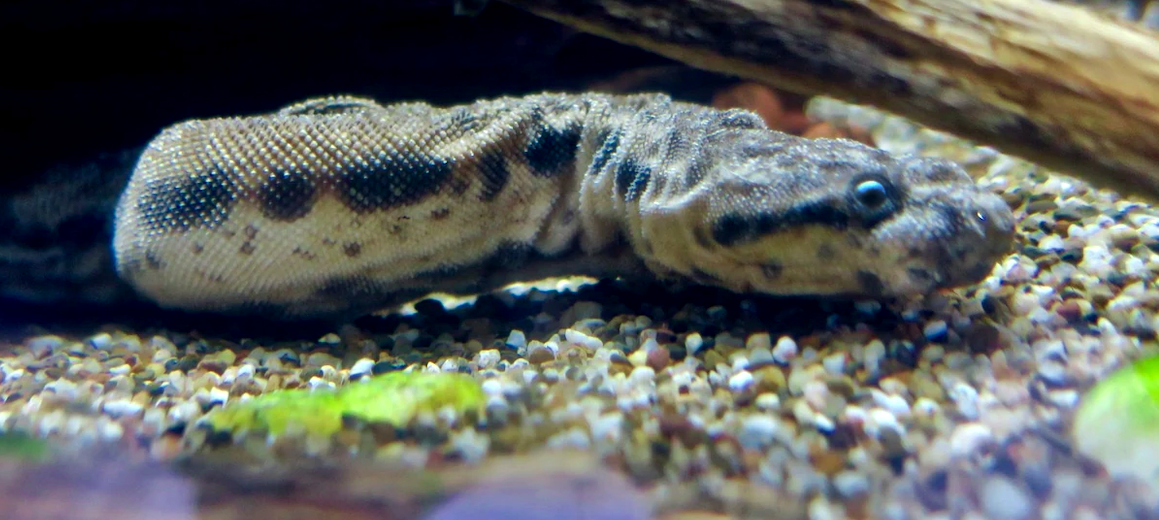
The elephant trunk snake, aka trunk snake or Javan file snake, is a nonvenomous, freshwater and brackish water snake that can be found in Cambodia, Indonesia, Malaysia, Thailand, and Vietnam. They can be seen in the mouths of canals, estuaries, lagoons, rivers, and streams. These snakes face the threats of over-collection for the pet and leather trade, pollution, and habitat destruction. However, their populations are stable throughout their range. Thus they are listed as Least Concern by the IUCN.
First the Stats…
Scientific name: Acrochordus javanicus
Weight: Up to 22 lbs.
Length: Up to 8 feet
Lifespan: Up to 15 years
Now on to the Facts!
1.) Thousands of these snakes are killed each year for their skin. Thousands more are killed for their meat, which is considered a delicacy in Asia.
2.) These snakes are sexually dimorphic in that females are nearly twice as long as males.
3.) They are ambush predators that lay in wait for passing prey to happen by.
4.) Elephant trunk snakes prey on amphibians and fish.
5.) Their skin is baggy and loose and almost appears as though it doesn’t quite fit their body.
But wait, there’s more on the elephant trunk snake!
6.) Females are gravid (pregnant) for up to 6 months.
7.) Like some other snakes, females are ovoviviparous in that they produce up to 17 young within eggs that stay within the female’s body and are hatched internally, then the snakelets are born live.
Did you know…?
These snakes have evolved to live solely in water. If they stay out of the water for too long, they will suffer serious injury, due to internal organ damage from the weight of their body.
8.) Once the snakelets are born, the eggs are reabsorbed into the body to regain lost calcium.
9.) The loose skin and sharp scales help these snakes hold onto their prey as they constrict it to death.
10.) Elephant trunk snakes can hold their breath for up to 40 minutes before having to surface for air.
But wait, there’s still more on the elephant trunk snake!
11.) These snakes are nocturnal (active at night).
12.) When these snakes bite, their teeth are sometimes left behind in the wound, causing additional pain and discomfort.
Now a Short Elephant Trunk Snake Video!
Be sure to share & comment below! Also, check out the Critter Science YouTube channel. Videos added regularly!
Want to suggest a critter for me to write about? Let me know here.
Think you know a lot about critters? Try your hand at these fun, free quizzes:



